Nature has bestowed Himachal Pradesh with a number of Hot Springs. These springs have attracted tourists and pilgrims alike from times immemorial for the medicinal properties these warm to hot waters hold and for the religious beliefs attached to them.
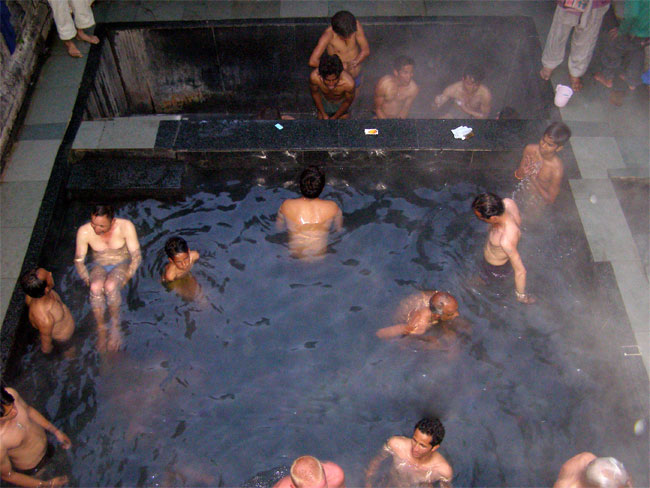
Most of these springs are located in the Beas and Satluj valleys of Kullu, rx Shimla and Mandi.
Scattered in these river valleys the Hot Springs are of three types – Simple Springs, Mineral Springs and Thermal Springs. Simple Springs are just like any ordinary springs emerging from an underground source of water to surface. Mineral Springs contain water with some mineral dissolved in it and Thermal Springs are hot like anything.
Some of the popular Hot Springs in Himachal Pradesh are:
Manikaran:
Located alongside Parbati River, a major tributary of River Beas, in Kullu valley, these hot water spring have been very popular for many centuries. Each year thousands of people converge onto Manikaran to take a plunge in the hot waters which are considered both holy and of medicinal value.
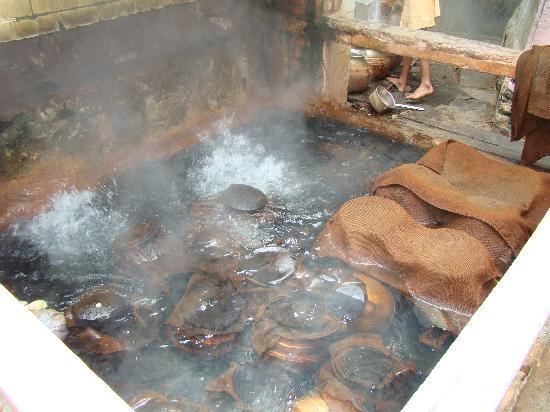
These waters emerging from the depths are so hot that pilgrims visiting the place can be seen cooking pulses (daal), rice, vegetables etc. in the boiling waters.
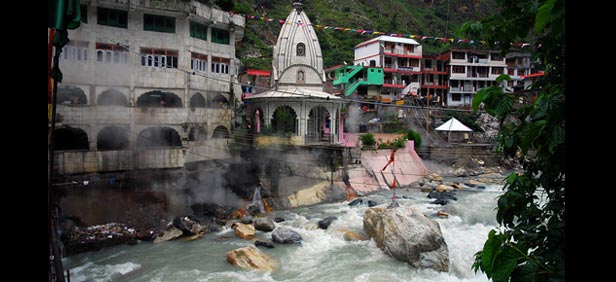
A Gurudwara, commemorating Guru Nanak Dev’s visit to Manikaran in the year 1574 is visited by thousands of Sikh pilgrims around the year. With the Sri Guru Nanak Dev Ji Gurudwara is a holy hot water bath spring that all pilgrims take to. Other than the first Sikh Guru, the 10th Guru Gobind Singh also did visit the place in his lifetime.
The Manikaran Springs contain sulphur and are believed to cure rheumatism and muscular pain.
Manikaran basically means Ear Rings. Legend holds that while taking bath at the springs Goddess Parvati lost her ear rings in the Kund (pond). When she informed husband Lord Shiva about the loss, he became furious and looked at the Kund with such anger that thousands of ear rings flowed out from the boiling water. Ever since then the water of the springs are said to be boiling.
Vashisht
Famous for its Turkish type baths, this hot water spring is located well above the river Beas, near Manali. These hot waters have made Vashisht village a well-known around the world.
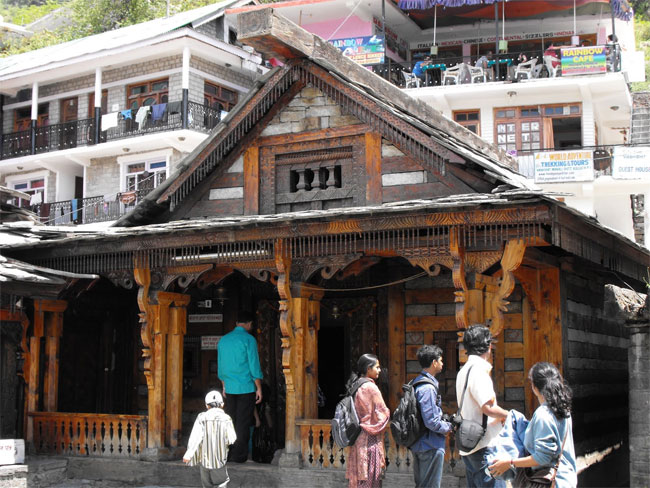
The village can be approached on foot (3 Km walk) from Manali. The Vashisht hot waters springs are believed to heal many skin diseases. The temperature of the water vary from 110°F to 123°F. Natural hot sulphur springs with two separate bathing tanks for men and women are available here.
Vashisht is also known for the stone temple dedicated to Vashisht Muni.
Tattapani
Famous for its hot waters and close to Shimla, thousands of pilgrims converge onto Tattapani on 13th January Makkar Sakranti to take a holy dip in the warm waters when the outside temperatures are hovering at freezing point.
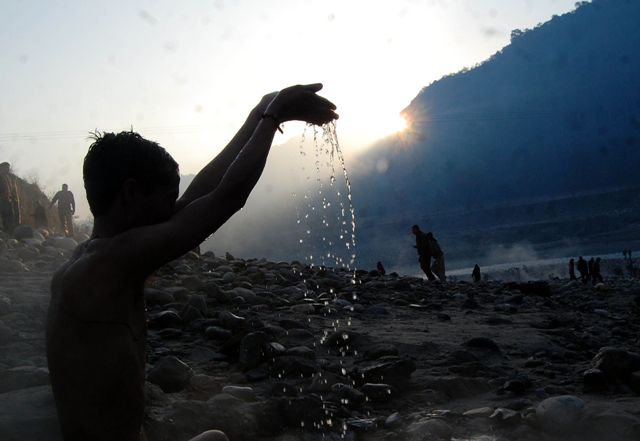
At an altitude level of 656 meters, 51 Kms from Shimla, along the right bank of river Satluj there are several hot water springs at Tattapani. However the water level of these spring keeps changing with the fluctuation in the water level in the river.
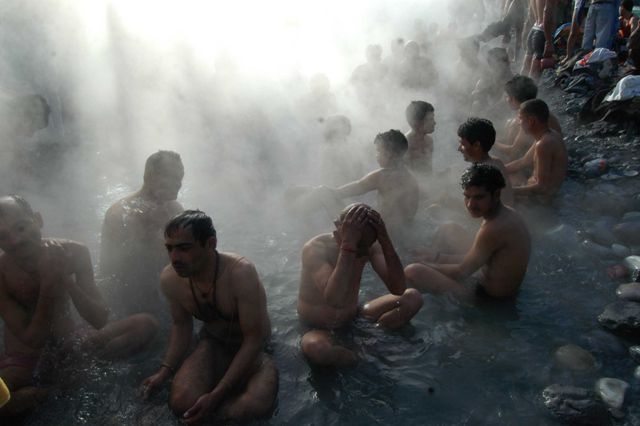
The very word Tatta Pani means hot water. People looking for curative sulphur baths often visit this place. Many visit the place just for Tuladan, a Hindu ritual. Cave temples at Shiv Goofa at Saraur, 4 Kms from Tattapani are part of a regular pilgrim circuit for those who visit the place for religious purposes.
The backwaters of Kol Dam threaten to submerge the Tatta Pani hot water springs. With the turbulence in the himalayan River Satluj calming down a little at Tatta Pani, it is also a starting point for white water river rafting, which would not be there anymore after the downstream river submerges in the Kol Dam back waters.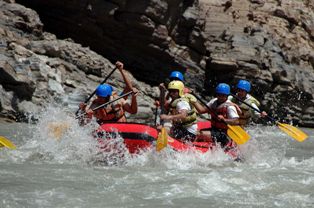
Kasol
Located in Parbati valley, 32 Kms from Bhuntar, Kasol has become very popular tourist resort, especially among Israeli tourists. In summers a Rabbi also comes over to cater to the religious needs of the small community.
The Kasol hot water spring is of moderate temperatures, much lower than that at Manikaran.
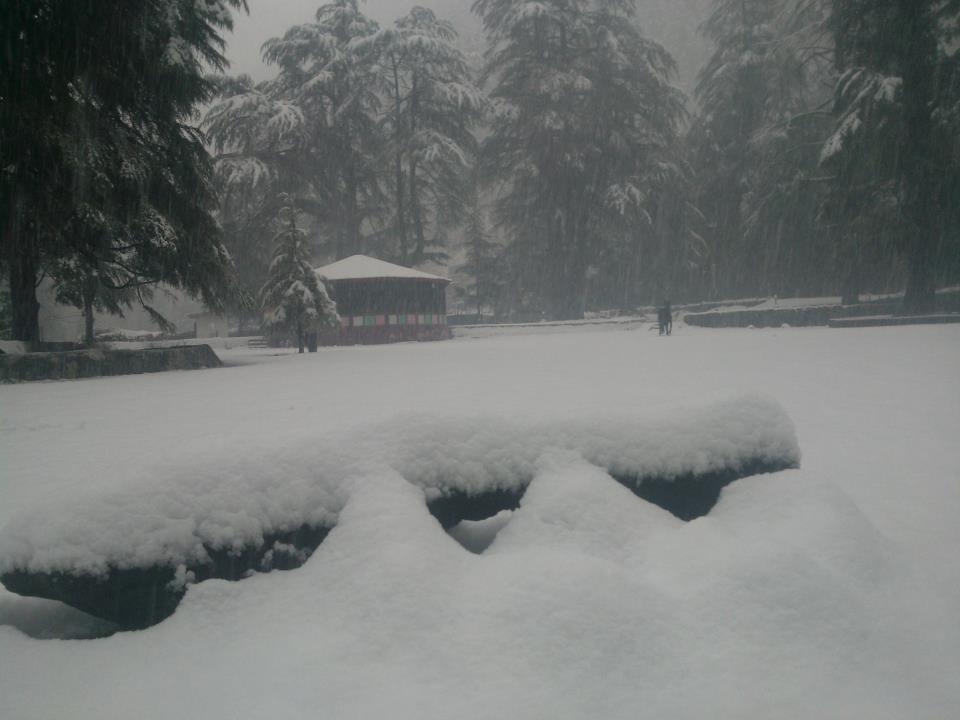
Kasol has a unique feel and resembles a tiny hamlet in a foreign locale. It is also a base for Himalayan trekking, to Sar Pass, Yanker Pass, Pin Parbati Pass and Khiriganga. This tiny destination, opposite Nikhthan village, is best approached on foot from Manikaran from where is just 1 Km upstream.
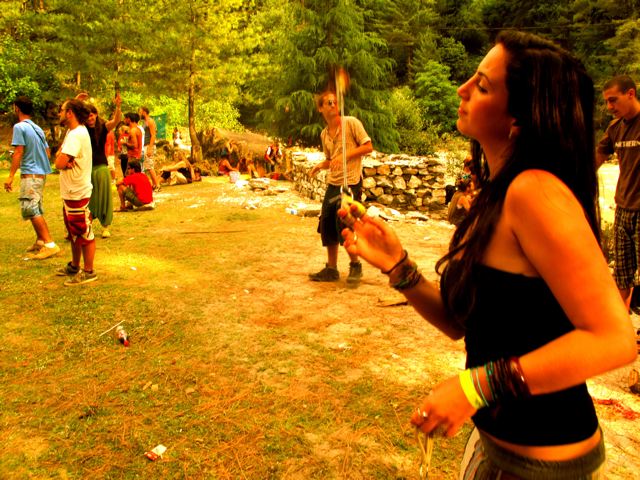
Khirganga
Located further up in Parbati valley of Kullu, this holy hot water spring can only be accessed by trekkers. Roughly at a distance of 22 from Manikaran, however the motorable road only gets to Barshaini from where one had to move on foot to get to Khirganga.
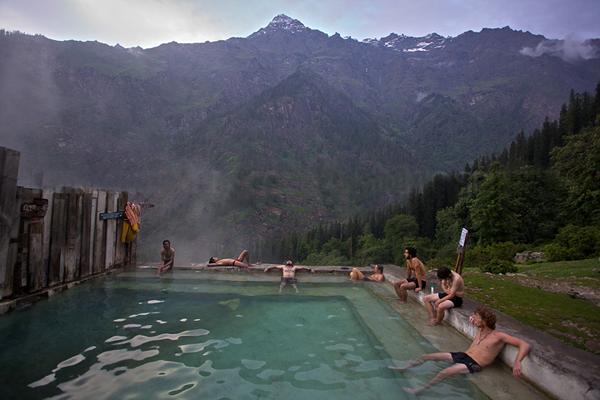
Among the numerous legends associated with this place one holds that ‘Kartik’, the elder son of ‘Lord Shiva’ and Goddess Parvati remained in ‘samadhi’ for thousands of years at this place. A natural hot-water-spring bath here is an experience that you will remember for a lifetime.
